#yellow-poplar
Video
n206_w1150 by Biodiversity Heritage Library
Via Flickr:
Illustrirte Garten-Zeitung. Stuttgart,E. Schweizerbart. biodiversitylibrary.org/page/6666474
#Horticulture#Periodicals#Pictorial works#Plants#Ornamental#New York Botanical Garden#LuEsther T. Mertz Library#bhl:page=6666474#dc:identifier=https://biodiversitylibrary.org/page/6666474#flickr#botanical illustration#scientific illustration#liriodendron tulipifera#tulip tree#American tulip tree#tulipwood#tuliptree#tulip poplar#whitewood#fiddletree#hickory-poplar#yellow-poplar#cottagecore#flowercore
2 notes
·
View notes
Text

Clinging On
Watercolor on Black Paper
2021, 12"x 16"
Aspen Trees
Private Collection
#art#nature#artists on tumblr#watercolor#floral#painting#minimalism#autumn#fall#trees#aspen#poplar#aspen tree#gold#yellow#red#artwork#botany#minimal#autumnal#cottagecore#naturecore
63 notes
·
View notes
Text
I go to tell Tighnari and Cyno a neat fact I learned about the Yellow Poplar outside of my office because I saw that there were these weird flowers on it.
Tighnari immediately launches into a three hour botany lecture. Cyno is confused because, "how can it be so poplar without 'u'?"
I am in love with both of them.
#toast talks#genshin impacted#Was this half based on an old joke that made my mom almost pee herself because she was laughing so hard? Yes.#There is in fact a yellow poplar tree outside my office with weird flowers on it! It's also known as a tulip tree!
3 notes
·
View notes
Text
Uh, here are some bowls I don't think I have posted pictures of







I have made 33 bowls so far and I think I'm getting pretty good at it!
#wood turning#wood working#yellow pine#bowls#sycamore#oak#rainbow poplar#maple#black Limba#black walnut#maybe I do know what I am doing?
2 notes
·
View notes
Text

1 note
·
View note
Text
Midcentury Porch Indianapolis

Inspiration for a mid-sized 1960s concrete front porch remodel with a roof extension
#yellow door#large porches#formal gardens#porch#thermally-treated wood siding#poplar siding#wood siding
0 notes
Text
altars for greek gods
this post includes hades, persephone, artemis, apollo, aphrodite, hermes, and hekate. for part 2 including zeus, hera, poseidon, hestia, hephaestus, dionysus, ares, demeter, and athena click here.
keep in mind that typical offerings to any god includes meat, wine, grain (specifically barley), honey, and incense (myrrh and frankincense would be period appropriate), but i'm listing some specific offerings that can be given if you'd like
colors can be used for candles, banners, decor, whatever you want
HADES
Colors: black, red, and white for association with death. purple and metallics for association with riches/wealth
Offerings: mint, asphodel, white poplar, pomegranate, coffee, cinnamon, elm, money, chocolate
Crystals: gemstones, black crystals (obsidian, black tourmaline, smokey quartz, etc.), pyrite, hematite, labradorite
Animals: black ram, owl, serpent, Cerberus
PERSEPHONE
Colors: purple, pink, yellow, green for association with springtime. black and metallics for association with Hades. white for purity.
Offerings: pomegranate, flowers, grains, asphodel, lavender, rosemary
Crystals: amethyst, gemstones, moss/tree agate, milk quartz, jade, lepidolite
Animals: deer, ram, bat, talking birds (including parrots)
APHRODITE
Colors: red and pink for love/sexuality. white and blue for association with the ocean. gold for association with, well, gold.
Offerings: roses, chocolate, shells, myrrh, gold
Crystals: rose quartz, pearl, emerald, opal, aquamarine, rhodonite, rhodochrosite, ocean jasper, morganite
Animals: swan, dove, hare
ARTEMIS
Colors: white, blue, black, and grey for association with the heavens. brown and green for association with nature/the hunt.
Offerings: moon shaped foods, frankincense, cypress, mugwort, amaranth
Crystals: morganite, moonstone, aventurine, selenite, celestite, moss/tree agate, amethyst, quartz (specific dendritic), labradorite
Animals: deer, wolf, wild boar
APOLLO
Colors: yellow, white, and blue for association with the heavens. red, orange, and pink for healing. purple and green for the Oracle
Offerings: sun shaped foods, bay leaves, laurel, cypress, playing music, poetry
Crystals: sunstone, amber, calcite (specifically honey and yellow), quartz (specifically rutilated or clear), rose quartz
Animals: cow, snake, hawk, crow/raven, cicada, swan
HERMES
Colors: green and gold for money/luck. white and brown for travels.
Offerings: money, crocus/saffron, strawberries
Crystals: jade, malachite, fluorite, pyrite, lapis lazuli, citrine, alexandrite
Animals: tortoise, ram
HEKATE
Colors: purple, blue, and green for magic. red and black for association with underworld
Offerings: garlic, saffron, crossroad dirt, black salt, ashes, sage, cedar, yew
Crystals: labradorite, obsidian, hematite, black tourmaline, amethyst, bloodstone, serpentine, lepidolite
Animals: wolf, boar, serpent, lion, horse, cow
#pagan#paganism#polytheist#witchblr#witchcraft#polytheism#witch#magic#magick#ancient greece#hellenic paganism#hellenic polytheism#hellenic pagan#hellenic deities#hellenic gods#greek polytheism#greek mythology#greek gods#ancient greek mythology#ancient greek#altar#deity#deity work#deity worship#hades#persephone#artemis#aphrodite#hermes#hecate
2K notes
·
View notes
Text
There, in the sunlit forest on a high ridgeline, was a tree I had never seen before.
I spend a lot of time looking at trees. I know my beech, sourwood, tulip poplar, sassafras and shagbark hickory. Appalachian forests have such a diverse tree community that for those who grew up in or around the ancient mountains, forests in other places feel curiously simple and flat.
Oaks: red, white, black, bur, scarlet, post, overcup, pin, chestnut, willow, chinkapin, and likely a few others I forgot. Shellbark, shagbark and pignut hickories. Sweetgum, serviceberry, hackberry, sycamore, holly, black walnut, white walnut, persimmon, Eastern redcedar, sugar maple, red maple, silver maple, striped maple, boxelder maple, black locust, stewartia, silverbell, Kentucky yellowwood, blackgum, black cherry, cucumber magnolia, umbrella magnolia, big-leaf magnolia, white pine, scrub pine, Eastern hemlock, redbud, flowering dogwood, yellow buckeye, white ash, witch hazel, pawpaw, linden, hornbeam, and I could continue, but y'all would never get free!
And yet, this tree is different.
We gather around the tree as though surrounding the feet of a prophet. Among the couple dozen of us, only a few are much younger than forty. Even one of the younger men, who smiles approvingly and compliments my sharp eye when I identify herbs along the trail, has gray streaking his beard. One older gentleman scales the steep ridge slowly, relying on a cane for support.
The older folks talk to us young folks with enthusiasm. They brighten when we can call plants and trees by name and list their virtues and importance. "You're right! That's Smilax." "Good eye!" "Do you know what this is?—Yes, Eupatorium, that's a pollinator's paradise." "Are you planning to study botany?"
The tree we have come to see is not like the tall and pillar-like oaks that surround us. It is still young, barely the diameter of a fence post. Its bark is gray and forms broad stripes like rivulets of water down smooth rock. Its smooth leaves are long, with thin pointed teeth along their edges. Some of the group carefully examine the bark down to the ground, but the tree is healthy and flourishing, for now.
This tree is among the last of its kind.
The wood of the American Chestnut was once used to craft both cradles and coffins, and thus it was known as the "cradle-to-grave tree." The tree that would hold you in entering this world and in leaving it would also sustain your body throughout your life: each tree produced a hundred pounds of edible nuts every winter, feeding humans and all the other creatures of the mountains. In the Appalachian Mountains, massive chestnut trees formed a third of the overstory of the forest, sometimes growing larger than six feet in diameter.
They are a keystone species, and this is my first time seeing one alive in the wild.
It's a sad story. But I have to tell you so you will understand.
At the turn of the 20th century, the chestnut trees of Appalachia were fundamental to life in this ecosystem, but something sinister had taken hold, accidentally imported from Asia. Cryphonectria parasitica is a pathogenic fungus that infects chestnut trees. It co-evolved with the Chinese chestnut, and therefore the Chinese chestnut is not bothered much by the fungus.
The American chestnut, unlike its Chinese sister, had no resistance whatsoever.
They showed us slides with photos of trees infected with the chestnut blight earlier. It looks like sickly orange insulation foam oozing through the bark of the trees. It looks like that orange powder that comes in boxes of Kraft mac and cheese. It looks wrong. It means death.
The chestnut plague was one of the worst ecological disasters ever to occur in this place—which is saying something. And almost no one is alive who remembers it. By the end of the 1940's, by the time my grandparents were born, approximately three to four billion American chestnut trees were dead.
The Queen of the Forest was functionally extinct. With her, at least seven moth species dependent on her as a host plant were lost forever, and no one knows how much else. She is a keystone species, and when the keystone that holds a structure in place is removed, everything falls.
Appalachia is still falling.
Now, in some places, mostly-dead trees tried to put up new sprouts. It was only a matter of time for those lingering sprouts of life.
But life, however weak, means hope.
I learned that once in a rare while, one of the surviving sprouts got lucky enough to successfully flower and produce a chestnut. And from that seed, a new tree could be grown. People searched for the still-living sprouts and gathered what few chestnuts could be produced, and began growing and breeding the trees.
Some people tried hybridizing American and Chinese chestnuts and then crossing the hybrids to produce purer American strains that might have some resistance to the disease. They did this for decades.
And yet, it wasn't enough. The hybrid trees were stronger, but not strong enough.
Extinction is inevitable. It's natural. There have been at least five mass extinctions in Earth's history, and the sixth is coming fast. Many people accepted that the American chestnut was gone forever. There had been an intensive breeding program, summoning all the natural forces of evolution to produce a tree that could survive the plague, and it wasn't enough.
This has happened to more species than can possibly be counted or mourned. And every species is forced to accept this reality.
Except one.
We are a difficult motherfucker of a species, aren't we? If every letter of the genome's book of life spelled doom for the Queen of the Forest, then we would write a new ending ourselves. Research teams worked to extract a gene from wheat and implant it in the American chestnut, in hopes of creating an American chestnut tree that could survive.
This project led to the Darling 58, the world's first genetically modified organism to be created for the purpose of release into the wild.
The Darling 58 chestnut is not immune, the presenters warned us. It does become infected with the blight. And some trees die. But some live.
And life means hope.
In isolated areas, some surviving American Chestnut trees have been discovered, most of them still very young. The researchers hope it is possible that some of these trees may have been spared not because of pure luck, but because they carry something in their genes that slows the blight in doing its deadly work, and that possibly this small bit of innate resistance can be shaped and combined with other efforts to create a tree that can live to grow old.
This long, desperate, multi-decade quest is what has brought us here. The tree before me is one such tree: a rare survivor. In this clearing, a number of other baby chestnut trees have been planted by human hands. They are hybrids of the Darling 58 and the best of the best Chinese/American hybrids. The little trees are as prepared for the blight as we can possibly make them at this time. It is still very possible that I will watch them die. Almost certainly, I will watch this tree die, the one that shades us with her young, stately limbs.
Some of the people standing around me are in their 70's or 80's, and yet, they have no memory of a world where the Queen of the Forest was at her full majesty. The oldest remember the haunting shapes of the colossal dead trees looming as if in silent judgment.
I am shaken by this realization. They will not live to see the baby trees grow old. The people who began the effort to save the American chestnut devoted decades of their lives to these little trees, knowing all the while they likely never would see them grow tall. Knowing they would not see the work finished. Knowing they wouldn't be able to be there to finish it. Knowing they wouldn't be certain if it could be finished.
When the work began, the technology to complete it did not exist. In the first decades after the great old trees were dead, genetic engineering was a fantasy.
But those that came before me had to imagine that there was some hope of a future. Hope set the foundation. Now that little spark of hope is a fragile flame, and the torch is being passed to the next generation.
When a keystone is removed, everything suffers. What happens when a keystone is put back into place? The caretakers of the American chestnut hope that when the Queen is restored, all of Appalachia will become more resilient and able to adapt to climate change.
Not only that, but this experiment in changing the course of evolution is teaching us lessons and skills that may be able to help us save other species.
It's just one tree—but it's never just one tree. It's a bear successfully raising cubs, chestnut bread being served at a Cherokee festival, carbon being removed from the atmosphere and returned to the Earth, a wealth of nectar being produced for pollinators, scientific insights into how to save a species from a deadly pathogen, a baby cradle being shaped in the skilled hands of an Appalachian crafter. It's everything.
Despair is individual; hope is an ecosystem. Despair is a wall that shuts out everything; hope is seeing through a crack in that wall and catching a glimpse of a single tree, and devoting your life to chiseling through the wall towards that tree, even if you know you will never reach it yourself.
An old man points to a shaft of light through the darkness we are both in, toward a crack in the wall. "Do you see it too?" he says. I look, and on the other side I see a young forest full of sunlight, with limber, pole-size chestnut trees growing toward the canopy among the old oaks and hickories. The chestnut trees are in bloom with fuzzy spikes of creamy white, and bumblebees heavy with pollen move among them. I tell the man what I see, and he smiles.
"When I was your age, that crack was so narrow, all I could see was a single little sapling on the forest floor," he says. "I've been chipping away at it all my life. Maybe your generation will be the one to finally reach the other side."
Hope is a great work that takes a lifetime. It is the hardest thing we are asked to do, and the most essential.
I am trying to show you a glimpse of the other side. Do you see it too?
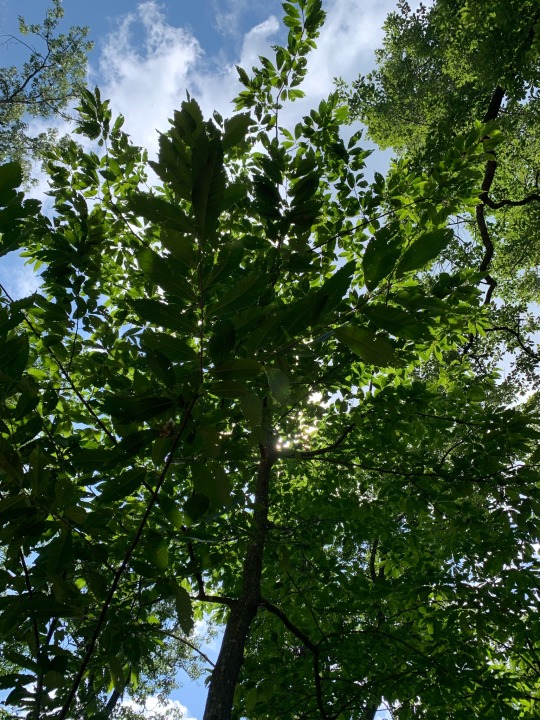
#american chestnut#hope#climate change#biodiversity crisis#climate crisis#trees#plantarchy#learning to imagine the future
3K notes
·
View notes
Text

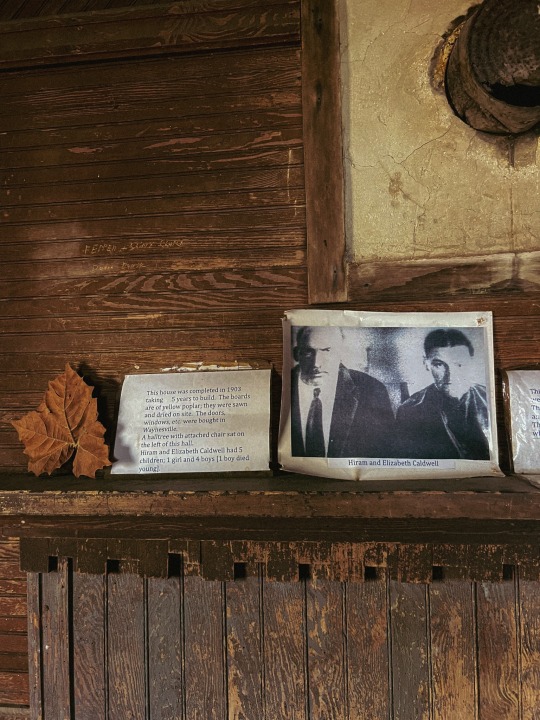
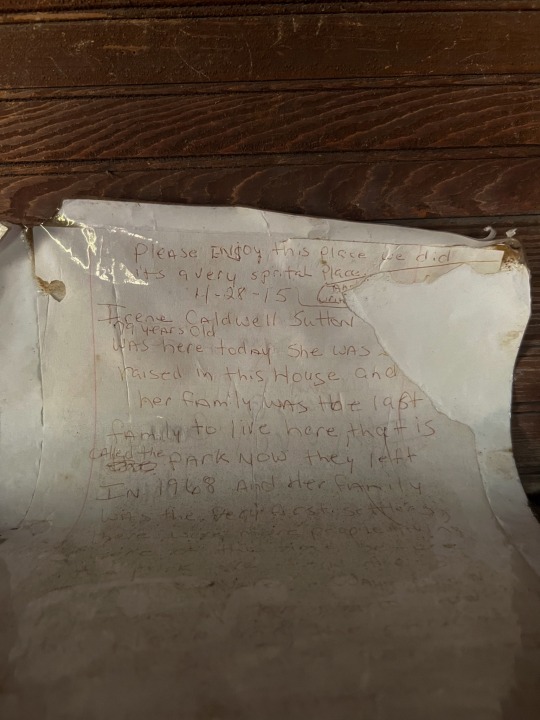
“This house was completed in 1903 taking 5 years to build. The boards are of yellow poplar; they were sawn and dried on site. The doors, windows, etc. were bought in Waynesville.
A halltree with attached chair sat on the left of this hall. Hiram and Elizabeth Caldwell had 5 children; 1 girl and 4 boys [1 boy died young].”
#north carolina#mine#appalachain mountains#appalachia#appalachian gothic#cataloochee valley#great smoky mountains#north carolina gothic#national park#historical structure#old house#woods#southern gothic#rural america#ruralcore#small town gothic#western north carolina#carolina gothic#explore#wood walls#wood flooring#fire place#photographers on tumblr#photography#old north carolina#early 1900s#architecture#old architecture
443 notes
·
View notes
Text
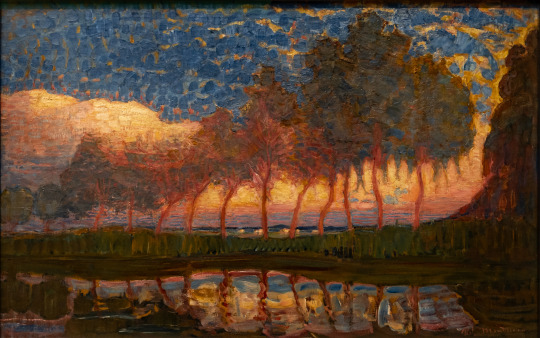
Piet Mondrian - Row of eleven poplars in red, yellow, blue and green (1908)
600 notes
·
View notes
Note

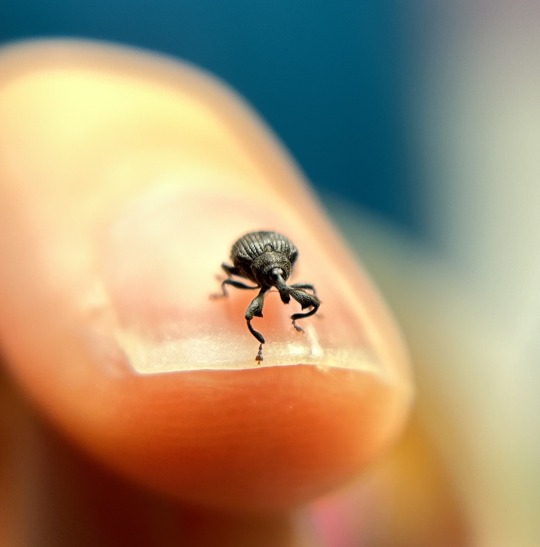
Adorable little yellow poplar weevil (I think)
weevil 470
171 notes
·
View notes
Text
Apollo Cheat sheet
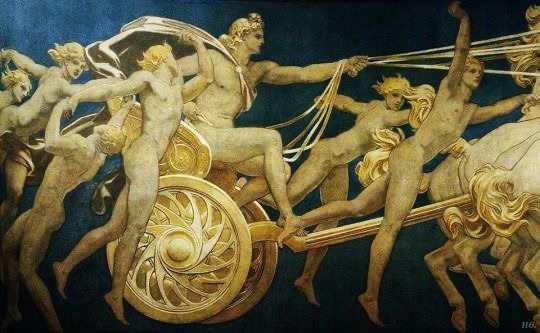
God of - prophecy and oracles, Music, song and poetry, archery, healing, plague and disease, and the protection of the young, divine distance, fertility, knowledge, dancing, wolves, locust, doorways, mice, entrances, foreigners, happy travels, light, omens, averting evil and harm, boundaries, and borders, laurels, mildews, the god who punishes and destroys, he helps and wards off evil, he protects the flocks and cattle, the foundation of towns and the establishment of civil constitutions, protection of young boys, god of purification, he’s also a Psychopomp.
Symbols- The lyre, Silver bow & arrows, Dolphins, Swans, Crows, Ravens, Lions, Wolves, Wolves, Mice, Griffins, Hawks, Snakes, Laurel wreath, Fire/flame, The sun/sunlight, Tripod, Apples
Incense/scents - Bay, Frankincense, Cypress, Clove, Cinnamon, Mugwort, Myrrh, hythincath, Rays of light radiating from his head, Branch of laurel, Wreath, amber, myrrh, lily of the valley, frankinscences, orange, lemongrass, marjoram
Colors • orange and yellow, red, gold and pure white blue, pink (means healing) purple and green (associated with the Oracle)
Herbs• Palm Tree, Apple Tree, Poplar Tree, Mistletoe, cinnamon, myrrh, bay leafs, sunflowers and red roses, oak wood, cypress (his veey dear friend ((not a lover or crush))), mint, heliotrope, Goldenseal, Date Palm, orange, lemongrass, marjoram
elements • his element is light
Day, month and festivals• Yule, Midsummer, May, sunday, his festivals are Noumenia, Delphinia, Thargelia, Apatouria, Pyanepsia, Asklepia (maybe), Pandia (maybe)
Patron of - medicine, mental health, physical health, therapy, the alphabet/words, defender of herds and flocks, justice, prophecy, and mental and moral purity, herdsmen and shepherds, anything in the medical field.
What I resonate with him • resseces pieces (I forgot why), Raven, lyre, lemonade, yellow, sun, bob Ross, painting, singing, humming, melody, Oracle’s, prophecies, knowledge, Purification, suns/ stars
Crystals•Sunstone, Citrine, Carnelian, Clear Quartz, Pyrite, Selenite, Lapis Lazuli
His sacred items - Bow and arrows; lyre; the wreath of laurel leaves (he wears that which is to be understood as Daphne’s hair.)
Planet - The sun
Tarot card- the sun, the chariot
Number - 7
Animals - Wolf, griffin, dolphins, Swans, foxes, roe deer, swans, cicadas, hawks, ravens, crows, foxes, mice, and snakes
Signs he's reaching out• Significant Dream Encounters of him, Frequent Solar Imagery, Increased Interest in the Arts, Strong Connection to Healing, seeing his Symbols and Animals, having Prophetic Experiences, finding yourself seeking the truth all of the sudden, Attraction to Light and Warmth
What u could put on his alter • Sun water, Wine (diluted with pure water), Milk, Olive oil, Herbal teas, Honey, honey cakes, Orange and lemon pastries, Lamb meat, goat meat, Fruits, Cheeses, Wheat, Breads, Golden objects (ex- such as gold bowls, gold wine cups, flakes of gold), Bows and arrows (real or fake), art, Images of the sun, All musical instruments, (especially stringed instruments), Wolf imagery, dolphin imagery, Any images of birds (especially crows and swans), Yellow, gold, and white candles, Incense he likes. He likes his alters Neat, clean, not cluttered, orderly, surround him with who he loves (ex- past lovers, Leto, artemis) , add images of wolves, mice, and ravens, Wine, incense, gifts of solar imagery, oranges
Other titles of apollon• ABAEUS/ Abaios (derived from the town of Abae in Phocis),
ACERSE′COMES/Akersekomês (Apollo expressive of his beautiful hair which was never cut or shorn.) ACE′SIUS/ Akesios (surname of Apollo, under which he was worshipped in Elis, This surname, which has the same meaning as akestôr and alexikakos as the god of averter of evil), ACESTOR/Akestôr (A surname of Apollo which characterises him as the god of the healing art, or in general as the averter of evil, like akesios), ACTIACUS (a surname of Apollo, derived from Actium, AEGLE′TES/Aiglêtês (that is, the radiant god), AGE′TOR/Agêtôr (a surname given to several gods, example is Zeus at Lacedaemon) AGO′NIUS/Agônios (a surname or epithet of several gods, like Zeus), AGRAEUS/Agraios (the hunter a surname of Apollo After he had killed the lion of Cithaeron), AGYIEUS/Aguieus (a a title describing him as the protector of the streets and public places), ALEXI′CACUS/ Alexikakos (the averter of evil, is a surname given by the Greeks to several deities like Zeus.), AMAZO′NIUS/ Amazonios, AMYCLAEUS/Amuklaios, ARCHE′GETES/Archêgetês (A surname of Apollo, under which he was worshipped in several places, as at Naxos in Sicily), Megara (The name has reference either to Apollo as the leader and protector of colonies, or as the founder of towns in general, in which case the import of the name is the same as theos patroôs.), BOEDRO′MIUS/ Boêdromios (the helper in distress), CARNEIUS/ Karneiosx, CATAE′BATES/Kataibatês (invoked by this name to grant a happy return home, katabasis (to those who were travelling abroad), CHRYSAOR/Chrusaôr) (The god with the golden sword or arms), CLA′RIUS/ Klarios (derived from his celebrated temple at Claros in Asia Minor), CO′RYDUS/Korudos (from the temple eighty stadia from Corone, on the sea-coast), CY′NTHIUS and CY′NTHIA/Kunthia and Kunthios (surnames of Artemis and Apollo from island of Delos, which is their birthplace), DAPHNAEUS and DAPHNAEA/Daphnaia and Daphnaios (surnames of Artemis and Apollo), DECATE′PHORUS/ Dekatêphoros (that is, the god to whom the tenth part of the booty is dedicated), DE′LIUS and DE′LIA/ Dêlios and Dêlia or Dêlias (surnames of Apollo and Artemis respectively), DELPHINIUS and DELPHI′NIA/ Delphinia (a surname of Artemis at Athens & The masculine form Delphinius is used as a surname of Apollo), EPACTAEUS or EPA′CTIUS/ Epaktaios or Epaktios (the god worshipped on the coast, was also used as a surname of Poseidon in Samos) EPIBATE′RIUS/ Epibatêrios (the god who conducts men on board a ship), EPICU′RIUS/ Epikourios (the helper),
EUTRESITES/Eutrêsitês (derived from Eutresis, where he had a ancient Oracle), GALA′XIUS/Galaxios a (from Boeotia, derived from the stream Galaxius),
HEBDOMA′GETES/Hebdomagetês (was derived from the fact of sacrifices being offered to him on the seventh of every month, the seventh of some month which became the god's birthday), HECAERGUS/Hekaergos (same meaning as Hecaerge in the case of Artemis),HY′LATUS/Hulatos (derived from the town of Hyle in Crete, which was sacred to him), INTONSUS/unshorn, (surname of Apollo and Bacchus showing the eternal youth of these gods, beacuse the Greek youths allowed their hair to grow until they attained the age of manhood), ISME′NIUS/Ismenios (A surname of Apollo at Thebes), ISO′DETES/Isodetêg (the god who binds all equally, is also used as a surname of Pluto),I′XIUS/Ixios (derived from a district of the island of Rhodes which was called Ixiae or Ixia.), LAPHRAEUS/Laphraios (a surname of Apollo at Calydon), LEUCA′DIUS/ Leukasios (a son of Icarius and Polycaste, and a brother of Penelope and Alyzeus. Leucas was believed to have derived its name from him), LIBYSTI′NUS, LOE′MIUS/Loimios (the deliverer from plague),
LO′XIAS/Loxias (derived by some from his intricate and ambiguous oracles), LYCE′GENES/Lukêgenês (describing him either as the god born in Lycia, or as the god born of light), LYCEIUS/Lukeios (the meaning is not quite certain, some derive it from lukos, a wolf, so that it would mean "the wolf-slayer;" others from lukê, light, according to which it would mean "the giver of light;"), LY′CIUS/Lukios (the Lycian, a surname of Apollo, who was worshipped in several places of Lycia),
LYCO′REUS/Lukôreus (A surname of Apollo perhaps in the same sense as Lyceius), MALEATES/Maleatês (surname of Apollo, derived from cape Malea, in the south of Laconia),MARMARINUS/Marmarinos (the god of marble), MALLOEIS and MELUS/Mêlos (A son of Manto, from which the sanctuary of Apollo Malloeis in Lesbos was believed to have derived its name), MOIRA′GETES/Moiragetês (the guide or leader of fate, occurs as a surname of Zeus and Apollo at Delphi) MUSA′GETES/MUSAE (?), NO′MIUS/Noumios (surname of divinities protecting the pastures and shepherds sheared with Apollo, Pan. Hermes, and Aristaeus) ONCAEUS/Onkaios (a surname of Apollo derived from Oncesium on the river Ladon in Arcadia), PAEAN/Paian, Paiêôn or Paiôn (meaning "the healing," however, used also in the more general sense of deliverer from any evil or calamity, PAGASAEUS/ Pagasaios/the Pagasaean, from Pegasus, or Pegasae, (town in Thessaly, uses the surname of Apollo there.), PALATI′NUS, (surname of Apollo at Rome), PARNO′PIUS/Paruopios (the expeller of locusts) paruôps (a surname of Apollo, under which he had a statue on the acropolis at Athen), PARRHA′SIUS/Parrastos (A surname of Apollo, who had a sanctuary on Mount Lyceius, meaning “the helper”, PATAREUS/Patareus (derived from the Lycian town of Patara, where the god used to spend the six winter months in every year), PHILE′SIUS/Philêsios (surname of Apollo at Didyma, where Branchus was said to have founded a sanctuary of the god, and to have introduced his worship) PHOEBUS/ Phoibos (the shining, pure or bright, occurs both as an epithet and a name of Apollo), PHY′XIUS/Phuzios (the god who protects fugitives, also occurs as a surname of Zeus in Thessaly), PY′THIUS/Puthios the Pythian, from Pytho (the ancient name of Delphi, often occurs as a surname of Apollo), SALGANEUS/Salganeus (a surname of Apollo, derived from the town of Salganeus in Boeotia), SARPEDONIUS and SARPEDO′NIA/Sarpêdonia (a surname of Artemis, derived from cape Sarpedon in Cilicia, where she had a temple with an oracle, The masculine Sarpedonius occurs as a surname of Apollo in Cilicia.) SMINTHEUS/Smintheus (a surname of Apollo, which is derived by some from sminthos, a mouse, and from the town of Sminthe in Troas), SPO′DIUS/Spodios (a surname of Apollo at Thebes, derived from spodos, ashes, because his altar consisted of the ashes of the victims which had been sacrificed to him.), TEGYRE′IUS/Tegurêios (a surname of Apollo, derived from the town of Tegyra in Boeotia. where, according to some traditions, the god had been born), TELMI′SSIUS/Telmissios (a surname of Apollo derived from the Lycian town of Telnissus or Telmessus),TEMENITES/Temenitês (a surname of Apollo, derived from his sacred temenus in the neighbourhood of Syracuse), THEOXE′NIUS/Theoxenios (a surname of Apollo and Hermes), THYMBRAEUS/Thumbraios (A surname of Apollo, derived from a place in Troas called Thymbra, where he had a temple in which Achilles was wounded, or from a neighboring hill of the same name), ZOSTERIUS and ZOSTE′RIA/Zôstêria (a surname of Athena among the Epicnemidian Locrians, The masculine form Zosterius occurs as a surname of Apollo in Attica, on the slip of land stretching into the sea between Phaleron and Sunium)
Epithets•Abaeus, Apollo Acesius, Acestor, Acraephiaeus Apollo, Acraephius Apollo, Actiacus Apollo, Apollo Actiacus, Apollo Aegletes, Agetor, Agonius, Agraeus, Agyieus, Alexicacus,Amazonius, Anextiomarus, Aphetor Apollo, Aphetorius Apollo, Apollo Musagetes, Apollo Soranus, Apollo Apotropaeus, Apulu, Archegetes, Argyrotoxus Apollo, Apollo Articenens, Apollo Averruncus, Apollo Clarius, Apollo Coelispex, Apollo Culicarius, Apollo Cynthius, Apollo Cynthogenes, Delius Apollo, Apollo Delius, Apollo Delphinius, Apollo Didymaeus, Apollo Epicurius Apollo Galaxius, Apollo Genetor, Hecaërgus Apollo, Apollo Hecebolus, Hekatos, Helius Apollo, Apollo Helius, Apollo Iatromantis, Apollo Iatrus, Apollo Ismenius, Kourotrophos, Apollo Leschenorius, Leucadius, Apollo Loxias, Apollo Lycegenes, Lyceus, Apollo Lycoctonus, Manticus Apollo, Apollo Medicus, Apollo Nomius, Apollo Nymphegetes, Paean (god), Apollo Paean, Apollo Parnopius, Apollo Patroüs, Apollo Phanaeus, Ptoion, Ptous, Pythius Apollo, Apollo Pythius, Apollo Smintheus, Apollo Sosianus, Thyraeus, Virotutis. (I’m not gonna put who, why or what the epithets are, cut me some slack 😔)
Equivalents• Abru (Berber), Horus & Ra (Egyptian), Aplu (Etruscan), Helios (Greek), Apollo & Janus (Roman), Nergal (Aplu Enlil) (Semitic)
Offerings• Candles (he’s the god of light), Paint brushes/paints, Canvases, Colored pencils, markers, crayons, Collages, Journals, Art books, Art prints, Anything you mad, Sculptures, Zines, Stickers, Any art supplies, Music boxes, Records, CDs,Cassettes, Record players,radios, MP3, Headphones, Music posters, Band merch, Instruments (especially String instruments), Dance shoes, Concert tickets, CD book holders, Sun and Light imagery, Sunscreen, Aloe for sunburns, Golden objects, Matches, Candles, Sunflowers/sunflower seeds, First aid kits, Medicine, Pain relievers, Band - aids, Ice/heat packs, Rice socks, face Masks, Aloe, Ambulance toy cars,Adaptive aids, Darts, Bow and arrows, Arrow quiver, Dart board, Targets used in archery, Bullseye used in archery, Snake skins, Snake imagery (ex - Python), Laurels, Bay leaves (because of Daphne), Palm trees (based on his birth myth), Ravens/Crows related things, Crow feathers, Cattle/turtles (related to Hermes birth myth), Swans (the animals Pull His chariot), Hyacinths (Hyacinthus is his past lover), Locks of hair, Vanilla flavored/scented things , Honey, Sunny D drink, Lemons/lemon juice, Oranges/orange juice, Citrus, Water, chocolate milk (UPG), molten orange-scented wax cube used on an oil burner, The first bite of every meal (keep a tea plate close by at mealtimes), Pot Pourri, visit a clairvoyant, Welcome foreigners, teach others your own culture/language, make sure foreigners are able to find helpful resources and social life in your community, Make sure the street outside your house is clean and secure, Resin, Sun-shaped cookies or cakes, Wine, Golden cakes, Golden raisins.
Devonatal- Donate to medical charities, Support beginner indie artists and musicians, Sing to Him, Play musical instruments for Him, Hold dance parties in his honor, Make a playlist for Him and listen to it, Read poetry to Him, Take care of your mental health in his honor, take your medicine in his honor, Try/do archery in his honor, Try/do different types of divination (ex- Tarot/Oracle decks, Pendulums, Rune stones, Charm casting supplies, Crystal balls, Scrying bowls, Cookie fortunes, Tea leaves), Try and wake up early and watch the sun rise, Go for a walk and feel the warmth from the sun, Let more sunlight into your home/room, Learn a musical instrument, learn how to sing, Learn simple medical care (ex- CPR), research his family in his honor, research Apollon, Attend pride, advocate for LGBT+ rights, Wear yellow clothing in his honor, wear orange clothing in his honor, Honor Leto and Artemis in his honor, Pray to Him/ speak to Him often (ex- for guidance, healing/good health, and new inspiration, protection, improvement in your mental health, fertility, ecstasy, for everything going well in the health aspect), Dance and sing to your favorite songs or songs you’d think He would like, Throw a feast in His honor, Support/donate to your local Hospital in his honor, Exercise in his honor, Get vaccinated in his honor, Get STI tested in his honor, practice Self care in his honor, Keep a first aid kit at home/in your car in his honor, Learn about alternative medicine in his honor, Advocate for accessible in his honor, Advocate for disability rights in his honor, Volunteer at a hospital in his honor, Give blood/plasma in his honor; Volunteer at a retirement home in his honor, Learn about anatomy/biology/nutrition in his honor, Learn about health conditions/rare disorders in his honor, Eat healthy for your body in his honor, Help fund surgeries if you can in his honor, Trip sit for someone in his honor, Listen to your body when it needs something in his honor , Sunbathe in his honor, Wear sunscreen in his honor, Start a garden in his honor, Make sun water in his honor, Music Go to a concert/show, Listen to music in his honor, Make a playlist for someone you love in his honor, dance in general in his honor, Sing in general in his honor, Support local bands in his honor, Explore new music in his honor, Daily tarot card/rune stones sessions in his honor, Make an oracle deck in his honor, Give divination readings in his honor, do Shadow work in his honor , do Colormancy in his honor, Make something in his honor, Draw in his honor, paint in his honor, craft in his honor, Color something for him, Make a zine in his honor, Go see a play in his honor, Get a tattoo in his honor, Throw darts in his honor, Use a slingshot in his honor, Go to a shooting range in his honor, follow and support artist/poet YouTubers and their social media, Check in with your neighbors, do Photography (painting with light), light a candle in his honor because he’s the of…light!
Crystal•Sunstone, Citrine, Carnelian, Clear Quartz, Pyrite, Selenite, Lapis Lazuli, amber, calcite (only the color honey/yellow), quartz (rutilated or clear), rose quartz.
Parentage• Zues and Leto
Siblings• his full sibling was his twin Artemis, His half siblings were Athena, Hermes, Dionysus, Aphrodite, Ares, Hephaestus and Persephone, Heracles, Ares, Perseus, Hebe, Aphrodite, Athena, Some Muses, Eileithyia.
Works well with• people who are respectful, and are honest, and not boastful.
Jewelry • friendship bracelets
Hates• saying that your better than him, (too boastful), being to stubborn to learn (he is the god of knowledge.), and anything contradicting his godlyness
Mortal or immortal • immortal.
Zodiac • Leo.
Curses• Sickness, and often seeing yourself lying, and in trouble.
Blessings• your healthy and protection and purification.
Vows/omans• he swears he will be Hermes best friend, and that he will never marry (he still has godpouses, pretty frequently, just as a boyfriend) because he swore he would never because he couldn't choose between all the Muses.
Morals• Morally grey.
Courting• he is unmarried.
Past lovers & crushes• Admetus (a crush), Daphne (rejected him and he fell so in love she had to run away and turn into a tree..), all the nine muses (couldn’t choose so decided to never unwed), Cyrene (a crush), Evadne (a lover who bore him a child.), Rhoeo (bore him a child and made him raise it..) Ourea (had a crush on Apollo and they hooked up on his exile and bore him a kid), Thero, Hyrie or Thyrie (said they were lovers but he made them suicidal so..idk..). Hecuba (bore the child who made Apollo kill Achilles.), Coronis (bore him Asclepius), Creusa (bore him a child and left him to die and then to be raised by a priestess of Apollo.), Hyacinthus (his most dear male lover.), Cyparissus (a dear friend but still a honorable mention.), Admetus (a crush), Branchus, Adonis (poly with apollon and Aphrodite), Helenus, Hippolytus of Sicyon,Hymenaios, god of marriage hymns, Iapis, Phorbas, minthe (who he turned into mint)
Personality• He has a quick temper, He’s very energetic, cheerful, wise, honest and kind, but sometimes he could be jealous (from what I've heard.)
Fact• He was the god of so many things that even the Ancient Greeks got confused, Apollo was temporarily stripped of his immortal power by Zeus – twice (maybe y’all might have a little more in common with being atleast human once!), he tried to over throw his father Zeus once! (He failed.)
Roots• Greek mythology, born at Delos in Cyclades archipelago.
Appearance in astral or gen• depicted as a handsome, beardless youth with long hair and wears a wreath and branch of laurel, bow and quiver of arrows, usually accompanied with a raven, and holding a lyre.
Children• Acraepheus, Aeneus, Agamedes, Agreus, Amphiaraus, Amphissus, Amphithemis, Anius, Apis, Apollonis, Arabius, Aristaeus, Asclepius, Borysthenis, Cephisso, Chariclo, Cinyras, Coronus, Cycnus, Delphus, Dius, Dorus, Dryops of Oeta, Eleuther, Epidaurus, Eriopis, Erymanthus, Eumolpus, Eurydice, Eurynome, Hilaeira, Hymen (god), Ialemus, Iamus, Idmon (Argonaut), Ion, Ismenus, Korybantes, Laodocus, Lapithes (hero), Linus (Argive), Linus, Linus of Thrace, Lycomedes, Lycorus, Melaneus of Oechalia, Melite, Miletus, Mopsus, Naxos, Oaxes, Oncius, Orpheus, Phemonoe, Philammon, Philander, Phoebe, Phylacides, Polypoetes, Scylla, Syrus, Tenerus, Tenes, Troilus, Trophonius, Zeuxippus of Sicyon.
Pet• the swans pulling his chariot called the “singers of Apollo” or just “birds of Apollo”
Status• Greek mythology god, in the big theoi, not a Demi god.
Prayers•
Prayer to Lord Apollon for Help with Divination
Hear me, Foreseeing Apollon, Son of Indomitable Zeus and Gentle Leto, Brother to Far-Shooting Artemis. He who speaks of truth, If I have ever revelled in your sunlight, accept this prayer, Apollon Leader of Fate, I ask you to be with me during this divination and to guide my cards with your knowledge, I ask for your favour with a token of my praise, I offer to you (offering)- @praise-to-the-theoi
To Lord Apollon when taking medication
Hear me, healing Apollon, Father to Soothing Asklepios. He who controls both plague and healing, If I have ever honoured you, please accept this prayer, Shining Apollon, Please allow me to be safe when taking this medication, to aid it in its effectiveness, and to reduce the likelihood of negative side effects. I ask for your favour with a token of my praise, and I take this medication in your honour. -https://www.tumblr.com/praise-to-the-theoi
Prayer to Artemis and Apollon
Praise today, O Lord Apollo and Lady Artemis, rulers upon the Sun and Moon. The Celestial Twins, on this date, join each other in the sky, shining upon us their divine light and presence. Praise the children of Great Zeus and Leto; Hail Lady Artemis, the oldest daughter, who helped her mother at birth. Godess of the hunt, divine virgin, patroness of girls, their childhood and innocence. Hail Apollon, youngest son, born by his sister's hand. God of the plages and sickness. Patron of the arts, music and poetry. May they raise their bows and guide us towards their light. - serotoninbetweenpages
Prayer with his epithets in it-
Let us hymn Paean the great god, Apollo; Immortal, gloriously formed, unshorn, soft-haired, Stern-hearted, king, delighting in arrows, giver of life, Joyous, laughing, slayer of giants, sweet-hearted, Son of Zeus, slayer of dragons, lover of the laurel, Sweet of speech, of ample might, far-shooter, giver of hope, Creator of animals, divine, Jove-minded, giver of zeal, Mild, sweet-spoken, sweet-hearted, gentle-handed, Slayer of beasts, blooming, charmer of the spirit, soft-speaking, Shooter of arrows, desirable, healer, charioteer, Weaver of the world, Clarian, strong-hearted, father of fruits, Son of Leto, pleasant, delighting in the lyre, resplendent, Lord of the mysteries, prophet, magnanimous, thousand-shaped, Lover of the bow-string, wise, stiller of grief, sober,Lover of community, common to all, taking thought for all, benefactor of all, Blessed, making blessed, Olympian, dweller on the hills, Gentle, all-seeing, sorrowless, giver of wealth, Saviour from trouble, rose-coloured, man-breaker, path-opener, Glittering, wise, father of light, saviour, Delighting in the dance, Titan, initiator, revered, Chanter of hymns, highest, stately, of the height, Phoebus, purifier, lover of garlands, cheerer of the spirit, Utterer of oracles, golden, golden-complexioned, golden-arrowed, Lover of the lyre, harper, hater of lies, giver of the soul, Swift-footed, swift-voiced, swift of vision, giver of seasons. Let us hymn Paean the great god, Apollo.
- Epigram from Book 9 of the Greek Anthology, translated by W.R. Paton (1916-18)
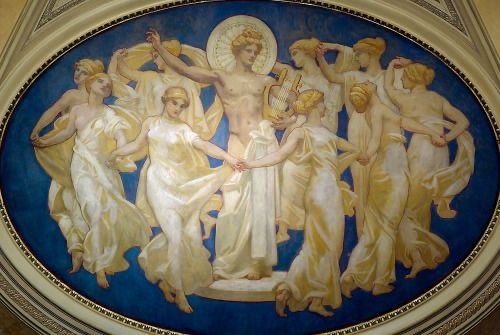
Links/websites/sources •
@praise-to-the-theoi
ofbloodandfaith
Reddit · r/Hellenism5 comments · 1 year agosimple offerings for apollo? : r/Hellenism
https://en.m.wikipedia.org/wiki/Apollo#Children https://www.thoughtco.com/roman-equivalents-of-greek-gods-4067799https://www.reddit.com/r/Hellenism/comments/d20s5v/would_amber_be_an_appropriate_incense_for_apollo/https://www.reddit.com/r/GreekMythology/comments/du0z4k/did_the_olympian_gods_have_particular_color/https://www.tumblr.com/eldritchhorror06https://www.tumblr.com/themodernwitchsguidehttps://web.pdx.edu/~scarmody/art342/exercise2/index.html#:~:text=Animals%20sacred%20to%20Apollo%20include,foxes%2C%20mice%2C%20and%20snakes.
let the light in and let your truth of loving Apollo shine aswell
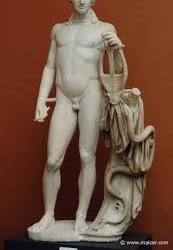

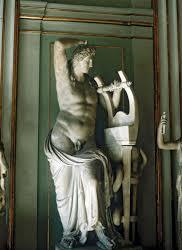



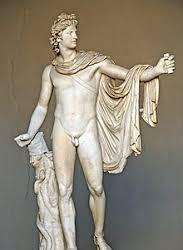
#the gods#hellenic devotion#hellenic polytheism#doing the research for you#hellenic worship#greek gods#greek mythology#qoutes#ancient greek#apollo#greek pantheon#apollo deity#hellenism#hellenic#Apollon#e offering#cheat sheet#greek polytheism#greek paganism#pagen#Pagen#deities#deity worship#polytheism#deity work#religion
275 notes
·
View notes
Text

THE GRASSES OF GREAT BRITAIN by Charles Johnson (London: Harwicke, c.1861). Illustrated by John E. Sowerby. Art binding by Hannah Brown (2021)

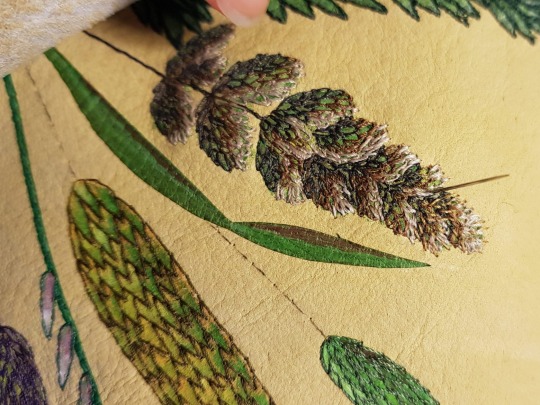

Bound in pale yellow bull skin with inlays in a variety of colors across the entire cover. Hand embroidered with 29 species of British grasses. The endpapers and doublures have numerous hand-colored grass seeds on them. The box is made from poplar.



source
#beautiful books#book blog#books books books#book cover#books#vintage books#illustrated book#book binding#art binding#book design#biodiversity#hanna brown#embroidered#charles johnson#grass type
812 notes
·
View notes
Text
Moth of the Week
Hornet Moth
Sesia apiformis
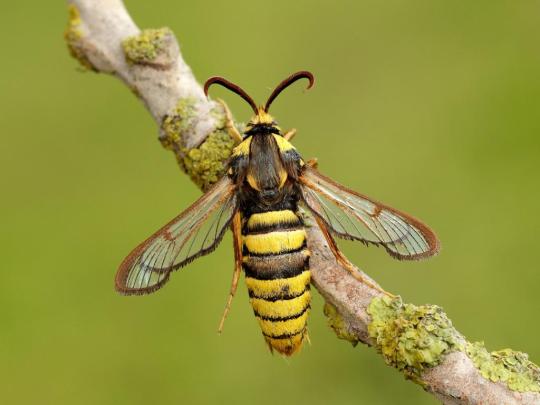
The hornet moth is a part of the family Sesiidae or the family of clearwing moths. They get their common name predictably from how they mimic the appearance of the hornet. This type of mimicry is called Batesian mimicry, which is when a harmless species mimics the appearance of a unpalatable or defended species to protect themselves from predators. It was first described in 1759 by Carl Alexander Clerck under the name Sphinx apiformis.
Description This moth uses what called Batesian mimicry to resemble the hornet so predators do not want to eat it for fear of being stung. The adult moths have clear wings with yellow and striped black bodies. The number of stripes varies, females have two stripes while males have three. They are about the size of a hornet with the same jerky flight pattern when disturbed. The only difference is the hornet moth has more yellow and lacks the waist between the abdomen and the thorax.
Wingspan Range: 34 - 50 mm (≈1.34 - 1.97 in)
Females are larger than males
Diet and Habitat The larvae eat several species of poplar trees such as apsen (Populus tremula), black poplar (Populus nigra), and goat willow (Salix caprea). They prefer trees surrounded by heavy vegetation as those kinds show more evidence of infestation from larvae burrowing into trees. Adults do not eat.
This moth ranges over mainland Europe, Great Britain, and parts of the Middle East. It had also been introduced to America and Canada. They prefer open habitats such as parks, hedgerows, golf courses, quarries, fens, pond edges, and pits.
Mating The female moths attract males using special posterior glands to emit pheromones, usually soon after emergence. The male doesn’t seem to have any courtship behaviors as the two sexes are likely to begin mating as soon as they come into contact. Both males and females mate multiple times with different partners before the female beings laying her eggs.
Females prefer to lay eggs on old or isolated trees surrounded by vegetation. Females can lay from hundreds to thousands of eggs and exhibits no parental care. When comparing the number of eggs laid to the number of adults emerging per year, it is clear the large number of eggs laid is to make up for the large mortality rate between the egg and adult stages.
Predators This species of moth is primarily preyed on by magpies and great tits. Interestingly, these birds do not eat hornets despite eating this moth. An explanation for this is since these birds don’t eat hornets, the mimicry is less effective as they have any bad experiences with insects of this coloration. In fact, it can be suggested that the black and yellow coloration has the opposite effect: once the birds realize this moth is harmless and can be easily seen, they begin to actively seek them out.
Fun Fact The hornet moth is seen as a pest in the eastern United Kingdom due to a large dieback of poplar trees from larvae burrowing into them. However this dieback is not inherently caused by the larvae but instead from drought and human influences, which the larvae increase the effect of.
(Source: Wikipedia, Butterfly Conservation)
#libraryofmoths#animals#bugs#facts#insects#moth#mothoftheweek#hornet moth#Sesia apiformis#Sesiidae#lepidoptera
223 notes
·
View notes
Text

Anna De Weert (Belgian, 1867-1950), Les grands peupliers jaunes [Large Yellow Poplars], 1901-07. Oil on canvas, 130 x 80.5 cm.
132 notes
·
View notes
Text
Apollon basic offerings and associations
Associations
Light
Song and Poetry
Archery
Knowledge
Prophecy and Oracles
Art
Healing and medicine
Plague and disease
Protection of Children
The sun
Truth
Sundays
number 7
Colors
Gold
Yellow
White
Silver
Orange
Tarot
The sun
Page of wands
The Chariot
Strength
Plants
Laurel
Larkspur
Apples/apple trees
Cypress
Hyacinth
Olives
Oranges and Lemons
Sun Flowers
bay leaves
dandelions
Poplar trees
Mugwort
Crystals
Citrine
Sunstone
Amber
Carnelian
Sapphire
topaz
Animals
Ravens
Bumblebees
Swans
Serpents
Wolves
Dolphins
Mouse
Griffin
Hawks
Offerings/Devotional
Honey
Poetry
Artwork
Music
Laurel wreaths
practicing archery
Solar magic
Sun water
Wine
Milk
Olive oil and olives
Teas
Honey cakes
Yellow, gold, and white or orange candles
Bread
Cheese
Fruits
Jewelry
Bows
Bird feathers(Ethically sourced)
practicing divination
Singing and dancing
Make a playlist
Wake up early to watch the sunrise or watch it fall
Learning healing and basic first aid
Learn about his lovers
Learn about Leto and Artemis
sit out in the sunlight
Learn a new instrument
Go for a walk in the golden hours
Flowers

#witchcraft#witchythings#beginner witch#witch tips#witchyvibes#crystals#witchblr#apollo#apollon#greek mythology#greek gods#greek pantheon#deity#deity work#deity worship#apollo deity#apollo devotee#apollon deity#apollon devotee#apollo devotion#sunlight#naturecore#light academia#study notes#study aesthetic#studyblr#study blog#artists on tumblr#ahsoka
114 notes
·
View notes
